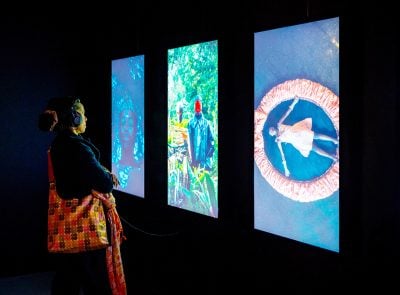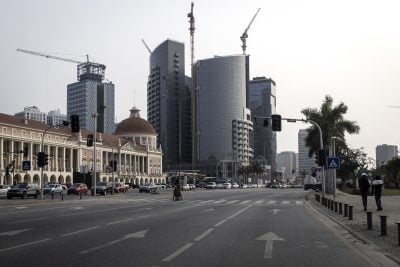While all the focus has been on China’s already overwhelming presence in Africa, India has been pushing its own case, albeit more quietly. Both volumes of trade and levels of investment have increased very considerably over the past decade, more especially over the past five years. While China’s main focus has been on the continent’s extractive resources, India has been developing the billion-strong African market for its manufacturing, pharmaceutical, IT and health service industries. But, like China, it appears to have an endless demand for energy, especially coal and oil, which Africa has in abundance. Given its historic connections to the continent, going back thousands of years, and the presence of high-calibre entrepreneurs of Indian stock in Africa, it is surprising that India’s involvement in Africa has only recently begun to assume substantial proportions. Given their complementary requirements, the India-Africa relationship should be one made in heaven.
China has been regularly making the headlines for its rapidly increasing economic presence across Africa. Less in the media spotlight is India, which is also, though more discreetly, developing an impressively large business presence, with an involvement in everything from gold to pharmaceuticals. Today India has emerged as Africa’s fourth-largest trading partner, behind the EU, China and the US.
According to Anand Sharma, India’s Trade Minister, trade between India, Asia’s third-largest economy, and Africa was worth a healthy $45bn in 2010–11 and is expected to grow beyond $75bn by 2015. Between 2004–5 and 2009–10, trade between the continent and India grew fourfold, from $9.6bn to $35bn. Indian exports to Africa rose from $5.6bn to $13.5bn over the same period.
The trade balance is in the favour of Africa, as the continent exports more goods to India than it imports. India’s imports from Africa grew from $587.5m to $18.8bn, between 1990 and 2009, while exports to the continent increased from $436.8m to $13.5bn during the same period.
The trend has been encouraged by India’s duty free tariff preferential scheme, announced in 2008, for a total of 48 least developed countries (LDCs). Thirty-three African countries are part of the scheme and cover 94% of India’s total tariff lines.
In addition to energy, trade in other sectors such as transport equipment, services, health and agriculture are also expected to continue to increase. With Africa’s growth rate in 2011 expected to reach 5.5% by the IMF and McKinsey, the global consultancy, predicting that the continent’s GDP will exceed $2.6bn by 2020, the potential for increased commerce is quite obvious.
Africa represents exciting opportunities for Indian investors, some of whom who are being squeezed out of their domestic market due to the intensity of the competition. Seeking a less-crowded market, “India has become one of the leading investors in African countries,” says Minister for Commerce & Industry, Shri Sharma. “Indian investments in Africa in joint ventures and wholly owned subsidiaries are touching the $33bn mark, covering diverse sectors like oil and gas, pharmaceuticals, petrochemicals, IT, fertilisers, infrastructure,” he says.
In contrast to China’s relationship with Africa, which is led largely by state-owned enterprises whose main interest lies in extractive and infrastructure industries, India’s Africa strategy is steered by the private sector, the Export-Import bank of India (Exim) and the Confederation of Indian Industries.
Since 2009–10, India has extended $5.4bn worth of lines of credit to Africa, as well as a grant of $500m; this has proved to be an effective catalyst to get the Indian private sector to Africa.
Exim bank started an initiative back in 2002, called ‘Focus Africa’ and targeted Kenya, Mauritius and Ethiopia, where the bank extended lines of credit (LOC) to support these countries to continue importing goods and services from India. LOCs have also been extended to the New Partnership for Africa Development (NEPAD) and towards the achievement of Millennium Development Goals (MDGs).
Between 1996–2011, cumulative Indian investments in Africa amounted to $16.3bn. This was largely driven by small and medium enterprises.
India’s high energy needs are reflected in its main imports from Africa, being predominantly crude petroleum, gold, and inorganic chemical products. India is currently the world’s fifth-largest consumer of energy and this figure is expected to double over the next 20 years on the back of a growing population and economy. India has an estimated population of 1.19bn and is the world’s second-most-populous country after China. Based on GDP, it is the world’s fourth-largest economy.
The Nigerian angle
In Africa’s second-largest economy, Nigeria, trade with India reached new heights during 2008–09, amounting to $10.2bn. Indian exports to the country are dominated by manufactured items such as machinery and instruments, pharmaceuticals, electronics and transport equipment. This figure fell to $8.7bn in 2009–10 due to the global financial recession. However, the balance of trade has been in Nigeria’s favour due to the large quantities of Indian imports of crude oil.
India has a pole position in Nigeria’s pharmaceuticals, steel and power transmission sectors. There are over 100 Indian companies that have a footprint in Nigeria, including Bharti Airtel, Tata, Birla Group, Bhushan Steel and Skipper Electricals. On top of this, there is a strong community of ethnic Indians living in Nigeria who are economically very active in consumer manufacturing and retailing, construction and air services.
South African presence
Africa’s biggest economy, South Africa has been ranked 11th most attractive foreign direct investment destination globally in 2011 according consulting firm AT Kearney. The country enjoys a flourishing trade relationship with India, its second-largest trading partner on the continent, with commerce increasing more than fivefold between 2003 and 2009, from $928m to $4.786bn.
Total bilateral trade was estimated to reach $10bn in 2012, but already in 2010–11, total trade surpassed 2012 predictions, reaching $10.6bn. A revised bilateral trade target of $15bn has been set for 2014.
An India-South Africa Customs Union Preferential Trade Agreement, which is expected to be concluded soon, will provide an important boost to exports in the Southern African region.
South Africa has become the gateway for India’s access to Africa’s one-billion-strong population. Indian investments in South Africa have not only grown rapidly, but have become very diverse, with companies including Tata (vehicles, IT, ferrochrome); Mahindras (utility vehicles) and a number of pharmaceutical companies, which include Ranbaxy and Cipla establishing strong footholds.
Indian companies have also been acquiring important stakes in South African companies. For example, the Tata Group has a 26% stake in South Africa’s Second Network Operator (SNO).
Both countries also have a very active contact in international forums, especially at the G77, G20, NAASP and the WTO. Both countries are also part of the IBSA trilateral initiative and are currently non-permanent members of the UN Security Council.
Kenya connections
In Kenya, one of Africa’s top consumer markets, India has once more reclaimed its position, and overtaken China as the second-largest exporter of goods to the country, giving a strong signal to China that it is quickly gaining ground on the continent.
According to the Kenyan National Bureau of Statistics, India’s exports to Kenya rose to KSh97.6bn ($1bn), an equivalent of 18.7% of Kenya’s total imports, in the first eight months of last year – compared to China’s KSh87.2bn ($994m) or 16.7% of imports.
This is significant for India, as it has been Kenya’s second-largest source of imports for much of the past decade, but lost the position in 2010, when Beijing increasingly got involved in major infrastructure projects in East Africa.
India sent a large business delegation to Nairobi in 2010, where big government deals were signed and facilities were made available for India to enter new segments of Kenya’s consumer market. Kenya’s Prime Minister Raila Odinga and India’s minister of Commerce and Industry agreed at the 2010 meeting that the two countries will increase trade by Sh240bn ($2.5bn) over the next two years.
Odinga further concluded a deal on a visit to India, with the Exim Bank, who offered KSh6bn ($61.6m) loan to finance the construction of new power transmission lines. Under the deal, Indian companies will supply all the labour and equipment Kenya mainly imports textiles, pharmaceuticals, industrial machinery, vehicles, electronic and semi-processed goods from India.
Even though China and India are considerable trade partners, their economic directions have also led to much rivalry. Trade between both countries is projected to rise from $70bn to $100bn in the next four years.
“India is massively playing catch-up to China in Africa, and only in recent years is it trying to engage the continent in a serious way. But it is trying to build political and economic ties, and position itself as different to China, which has acquired the image of being a new imperial power,” says Brahma Chellaney, professor at the New Delhi-based Centre for Policy Research.
Want to continue reading? Subscribe today.
You've read all your free articles for this month! Subscribe now to enjoy full access to our content.
Digital Monthly
£8.00 / month
Receive full unlimited access to our articles, opinions, podcasts and more.
Digital Yearly
£70.00 / year
Our best value offer - save £26 and gain access to all of our digital content for an entire year!
 Sign in with Google
Sign in with Google 


